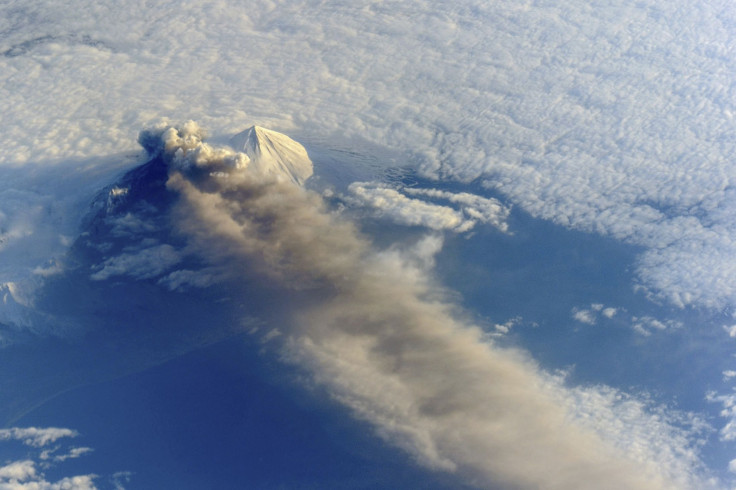Pavlof Volcano Eruption ‘Escalates,’ Alaska Officials Raise Alert Level

Alaska officials have raised the alert level on Monday for Pavlof Volcano from “Watch” to “Warning,” indicating that a low-level eruption of one of the state’s most active volcanoes may be intensifying.
In the last 24 hours, pilots have reported seeing an ash plume that reached more than 22,000 feet high, according to a recent update from the Alaska Volcano Observatory. Satellite imagery showed that the cloud of smoke stretched for about 80 kilometers (49.7 miles) to the east of the mountain peak.
“The low-level eruption of Pavlof has escalated,” officials announced.
The eruption began over the weekend, on Saturday, when scientists recorded elevated surface temperatures at the summit of the volcano. Satellite images indicated a low-level steam plume and a gas and ash plume drifting north at 7,000 to 8,000 feet above sea level.
According to the Anchorage Daily News, some campers reported seeing lava issuing from the northeast side of the volcano.
The 8,262-foot Pavlof Volcano, located 625 miles southwest of Anchorage on the Alaska Peninsula, is one of Alaska’s most active volcanoes. Dozens of eruptions have occurred at Pavlof since 1980.
An eruption that occurred about a year ago prompted flight cancelations by regional airlines to nearby communities. Like other active volcanoes in the Aleutian Chain, Pavlof lies directly below the commercial airline flight path for planes traveling between North America and Asia.
There are no reports of flight cancelations at this time.
For the latest updates on the Pavlof Volcano eruption, visit the Alaska Volcano Observatory website.
© Copyright IBTimes 2024. All rights reserved.






















